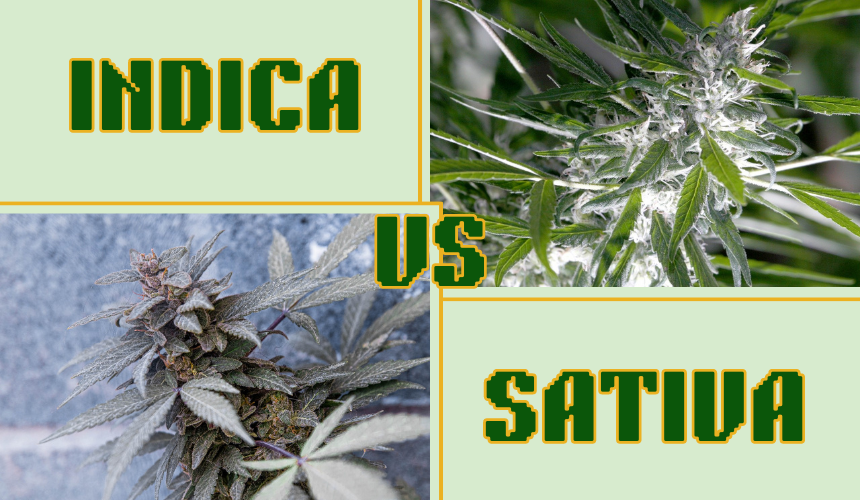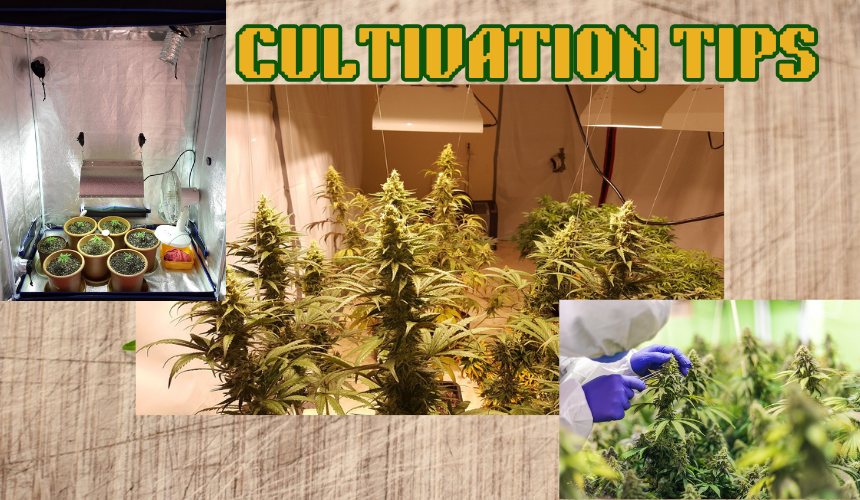A Comprehensive Look at Cannabis Indica
- A Comprehensive Look at Cannabis Indica
- Importance and relevance of understanding Cannabis Indica
- Understanding Cannabis
- Cannabis indica: Origins and Characteristics
- Chemical Composition of Cannabis indica
- Medicinal Benefits and Therapeutic Uses of Cannabis indica
- Recreational Use of Cannabis indica
- Cultivation and Growing Tips for Cannabis indica
- Legal and Regulatory Landscape of Cannabis indica
- Potential Side Effects and Precautions
- Conclusion
Importance and relevance of understanding Cannabis Indica
Cannabis, a plant with a rich history and diverse applications, has garnered significant attention in recent years. As the world becomes more accepting of its potential benefits, it is crucial to understand the different varieties and properties of cannabis.
In this blog post, we will answer the question of what Cannabis indica is by delving into the intricate world of this marvelous plant, shedding light on its origins, characteristics, medicinal benefits, recreational use, cultivation, legal landscape, and potential side effects.
Cannabis indica is one of the primary species* of the cannabis plant, alongside Cannabis sativa. While Cannabis sativa is known for its energizing and uplifting effects commonly referred to as a “head high”, Cannabis indica offers a distinct experience that is often associated with relaxation, sedation, and a sense of calm also known as a “body high”.
Understanding the unique traits of Cannabis indica can empower individuals to make informed decisions about its consumption and utilization.
Moreover, the medical potential of C. indica cannot be overlooked. Its therapeutic properties have shown promise in various areas, including pain management, sleep disorders, anxiety relief, and appetite stimulation.
By exploring these aspects, we aim to provide you with comprehensive insights into the potential benefits and considerations of C. indica as a medicinal resource.
In addition to its medicinal value, C. indica has gained popularity among recreational users. With a wide range of strains available, each with its own distinct characteristics, it offers a diverse range of experiences.
However, responsible consumption practices and understanding potential risks are essential for individuals who choose to engage in recreational use.
As cannabis laws and regulations continue to evolve worldwide, it is crucial to stay informed about the legal landscape surrounding the plant. We will explore the current legal status in different countries, the challenges and opportunities in the cannabis industry, and the changing attitudes toward this versatile plant.
While Cannabis indica holds immense potential, it is important to be aware of potential side effects and precautions. By understanding the common side effects, risk factors, and responsible consumption practices, individuals can ensure a safe and informed experience.
By the end of this blog post, we aim to equip you with a comprehensive understanding of Cannabis indica, enabling you to make informed decisions about its uses, whether for medicinal or recreational purposes.
Let’s delve into the origins, characteristics, medicinal benefits, cultivation techniques, legal landscape, and potential side effects of C. indica, to unlock the full potential of this intriguing plant.
Understanding Cannabis
To fully grasp the nuances of C. indica, it is crucial to first establish a foundation of understanding regarding cannabis as a whole.
In this section, we will explore the definition of cannabis, differentiate between Cannabis indica and Cannabis sativa, and delve into the legal status and global acceptance of cannabis.
Definition of cannabis:
Cannabis, also known as marijuana or weed, refers to a genus of flowering plants in the Cannabaceae family. The plant is characterized by its distinct chemical compounds, known as cannabinoids, which interact with the body’s endocannabinoid system to produce various effects.
Cannabis has been utilized for its psychoactive, medicinal, and industrial properties for centuries by countless civilizations.
Difference between Cannabis indica and Cannabis sativa:
While both C. indica and C. sativa belong to the same genus, they possess unique characteristics that differentiate them from each other.
- Cannabis indica is typically shorter and bushier in stature, with broad leaves and dense buds.
- Cannabis sativa tends to be taller, with narrow leaves and elongated buds.
Furthermore, their chemical compositions differ, resulting in varying effects on the body and mind.
Legal status and global acceptance of cannabis:
The legal status of cannabis varies across different countries and regions. In recent years, there has been a significant shift in attitudes and policies surrounding cannabis.
Some countries have decriminalized or legalized cannabis for medical and/or recreational use, while others maintain strict regulations.
Understanding the legal landscape is essential for individuals interested in exploring the potential of Cannabis indica and navigating its use within legal frameworks.
By establishing a solid understanding of cannabis, differentiating between C. indica and C. sativa, and exploring the legal status and global acceptance of cannabis, we can lay the groundwork for a more in-depth exploration of C. indica.
In the following section, we will delve into the origins and characteristics of Cannabis indica, shedding light on its unique qualities.
Cannabis indica: Origins and Characteristics
Now that we have a foundational understanding of cannabis, let’s dive into the fascinating world of C. indica.
In this section, we will explore the origins and characteristics of Cannabis indica, providing insights into its historical background, physical appearance, and geographic distribution.
Origins and history of Cannabis indica:
Cannabis indica has a long and intriguing history that can be traced back thousands of years. Its origins can be found in the mountainous regions of Central Asia, including areas such as Afghanistan, Pakistan, and the Himalayan foothills.
Indigenous cultures in these regions have utilized C. indica for various purposes, including medicinal, spiritual, and industrial uses.
Over time, the cultivation and utilization of C. indica spread to different parts of the world through trade routes and migration. Today, it is cultivated and enjoyed by individuals worldwide, contributing to its global popularity.
Physical appearance and characteristics of Cannabis indica plants:
Cannabis indica plants exhibit distinct physical characteristics that set them apart from other cannabis varieties. They are typically shorter and more compact, with broader leaves compared to C. sativa. The leaves of C. indica plants are dark green and tend to have a wide leaflet width.
Another notable feature of C. indica is its dense and resinous buds. These buds often display vibrant colors, ranging from deep purples to rich blues, making them visually appealing.
The resin produced by C. indica plants contains a high concentration of cannabinoids and terpenes, contributing to the unique effects and aroma associated with this variety.
Geographic distribution and cultivation preferences:
Cannabis indica has adapted to thrive in various climates and regions around the world. It is commonly found in areas with shorter growing seasons and colder climates, such as the mountainous regions of Afghanistan, India, and Nepal.
However, advancements in cultivation techniques have made it possible to grow C. indica in indoor environments or regions with milder climates.
The cultivation preferences of C. indica differ from other cannabis varieties. It tends to have a shorter flowering period and higher resin production, making it an attractive choice for those seeking efficient cultivation and extraction processes.
Understanding the origins and characteristics of C. indica provides valuable insights into its unique qualities and sets the stage for further exploration of its chemical composition, medicinal benefits, and recreational use.
In the upcoming sections, we will delve deeper into the chemical composition of Cannabis indica and its potential therapeutic applications.
Chemical Composition of Cannabis indica
To fully appreciate the effects and benefits of C. indica, it is essential to delve into its chemical composition.
In this section, we will explore the major cannabinoids present in C. indica, discuss their unique properties and effects, and touch upon the role of terpenes in shaping the overall experience.
Cannabinoids present in Cannabis indica:
Cannabinoids are the chemical compounds found in cannabis that interact with the body’s endocannabinoid system, producing various physiological and psychological effects. C. indica contains a diverse array of cannabinoids, with some of the key ones including:
- THC (Tetrahydrocannabinol): THC is the primary psychoactive compound in cannabis, responsible for the characteristic “high” associated with its use. It is known for its analgesic and antiemetic properties.
- CBD (Cannabidiol): CBD is another prominent cannabinoid found in Cannabis indica. Unlike THC, CBD does not induce psychoactive effects but offers potential therapeutic benefits. It is known for its potential anti-inflammatory, analgesic, and anxiolytic properties. The presence of CBD in Cannabis indica can help modulate the overall effects, providing a more balanced experience.
- CBG (cannabigerol): CBG is considered a minor cannabinoid as it is usually found in lower concentrations. However, it is gaining interest due to its potential therapeutic benefits. Indica strains can contain varying levels of CBG.
- CBC (cannabichromene): CBC is another minor cannabinoid that is present in cannabis. While its exact effects are not fully understood, it is believed to have potential therapeutic properties. Indica strains can contain varying levels of CBC.
- CBN (cannabinol): CBN is a cannabinoid that is formed when THC degrades over time or through exposure to oxygen. It is mildly psychoactive but is generally considered to have sedative effects. Indica strains can have higher levels of CBN compared to sativa strains.
It’s important to note that the cannabinoid composition can vary significantly among different cannabis strains, even within the same category like indica. Additionally, the levels of these cannabinoids can be influenced by various factors such as growing conditions, harvesting time, and post-harvest processing.
Unique properties and effects of these cannabinoids:
The combination and ratio of cannabinoids in Cannabis indica contribute to its distinct effects. The higher THC content often leads to relaxing, sedating, and body-centric effects, making it suitable for evening or nighttime use. These effects may help alleviate pain, reduce muscle tension, promote sleep, and induce a sense of calm and relaxation.
The presence of CBD in Cannabis indica strains can temper the psychoactive effects of THC and offer potential therapeutic benefits. The interaction between THC and CBD, along with other cannabinoids and terpenes, creates what is known as the “entourage effect,” where the combined compounds work synergistically to enhance their overall efficacy.
CBG is being investigated for its potential anti-inflammatory, analgesic, and neuroprotective properties. Although it is typically found in lower concentrations, its presence in C. indica adds to the overall effect, potentially enhancing the therapeutic potential.
Preliminary research suggests that CBC may have potential antidepressant, anti-inflammatory, and analgesic properties. Although more studies are needed, its inclusion in the cannabinoid profile of C. indica adds to its overall complexity and potential benefits.
CBN is formed through the degradation of THC over time or through exposure to oxygen. It is mildly psychoactive but is generally considered to have sedative effects. Indica strains, which often contain higher levels of CBN compared to sativa strains, may contribute to the relaxing and calming experiences commonly associated with C. indica.
Terpenes and their impact on the overall experience:
Terpenes are aromatic compounds found in cannabis that contribute to its distinct aroma and flavor. They also play a crucial role in shaping the effects and experiences associated with different cannabis strains, including Cannabis indica.
Some common terpenes found in C. indica include myrcene, linalool, and humulene.
Myrcene, for example, is known for its sedative properties and is believed to enhance the relaxing effects of C. indica. Linalool, on the other hand, is associated with a floral aroma and has potential calming and anti-anxiety effects.
The presence of specific terpenes in C. indica strains adds depth to the overall experience and can further contribute to its therapeutic potential.
Understanding the chemical composition of C. indica, including the presence of cannabinoids such as THC and CBD, as well as the role of terpenes, provides valuable insights into the unique effects and benefits this variety offers.
In the following section, we will explore the medicinal benefits and therapeutic uses of Cannabis indica, shedding light on its potential applications in various areas of health and well-being.
Medicinal Benefits and Therapeutic Uses of Cannabis indica
Cannabis indica has been recognized for its potential medicinal benefits and has been utilized for centuries to address a wide range of health conditions.
In this section, we will explore the therapeutic uses of C. indica, focusing on its analgesic and anti-inflammatory properties, management of sleep disorders and insomnia, anxiety and stress relief, appetite stimulation, and other potential medical applications.
Analgesic and anti-inflammatory properties:
One of the primary therapeutic applications of C. indica is its ability to provide pain relief. The combination of cannabinoids, particularly THC and CBD, along with other compounds present in C. indica, can interact with the body’s endocannabinoid system to alleviate pain and reduce inflammation.
This makes it potentially beneficial for conditions such as chronic pain, arthritis, migraines, and neuropathic pain.
Management of sleep disorders and insomnia:
Cannabis indica is often sought after for its potential to promote sleep and manage sleep disorders. The relaxing and sedating effects associated with this variety can help individuals with insomnia or those experiencing difficulty falling asleep.
By promoting relaxation and reducing anxiety, C. indica strains may contribute to improved sleep quality and duration.
Anxiety and stress relief:
Many individuals turn to C. indica as a natural remedy for anxiety and stress relief. The calming and relaxing effects of this variety can help reduce feelings of anxiety and promote a sense of tranquility.
Strains with higher CBD content may be particularly beneficial in this regard, as CBD has shown potential anxiolytic properties.
Appetite stimulation and management of nausea:
Cannabis indica is known for its potential to stimulate appetite, which can be beneficial for individuals dealing with a loss of appetite due to medical conditions or treatments such as chemotherapy.
Additionally, this variety has shown promise in managing nausea and vomiting, making it potentially useful for individuals undergoing certain medical treatments.
Other potential medical applications:
Beyond the areas mentioned above, C. indica has been explored for its potential in various other medical applications. These include potential benefits for muscle spasms and spasticity, reduction of intraocular pressure in glaucoma, management of symptoms in certain neurological disorders, and more.
Ongoing research continues to uncover new potential therapeutic applications for Cannabis indica.
It is important to note that while C. indica holds promise in various medicinal areas, individual experiences and responses may vary.
Consulting with healthcare professionals and obtaining medical advice before incorporating C. indica or any cannabis-related treatment into a healthcare regimen is crucial.
By exploring the medicinal benefits and therapeutic uses of C. indica, we gain insights into its potential applications in pain management, sleep disorders, anxiety relief, appetite stimulation, and other areas of healthcare.
In the next section, we will delve into the recreational use of C. indica, shedding light on the effects, experiences, and popular strains associated with this variety..
Recreational Use of Cannabis indica
While Cannabis indica has notable medicinal benefits, it is also popular among recreational cannabis users.
In this section, we will explore the effects and experiences associated with C. indica, discuss popular strains, and emphasize the importance of responsible consumption and potential risks.
Effects and experiences associated with Cannabis indica:
Cannabis indica is often sought after for its relaxing and sedating effects, which can induce a sense of physical calmness and deep relaxation. Users commonly report a “body high” that can alleviate muscle tension and provide a soothing sensation.
The euphoric and uplifting effects of C. sativa are typically less prominent in C. indica strains, making it more suitable for relaxation and unwinding.
Popular strains and their unique characteristics:
C. indica offers a diverse range of strains, each with its own unique characteristics and effects. Some popular indica strains include Northern Lights, Granddaddy Purple, Afghan Kush, and Blueberry.
These strains may vary in terms of potency, aroma, flavor, and overall experience. Exploring different strains allows individuals to find the one that best suits their preferences and desired effects.
Responsible consumption and potential risks:
While recreational use of C. indica can be enjoyable, it is crucial to approach it with responsibility and awareness. Some key considerations include:
- Dosage control: Starting with a low dosage and gradually increasing if needed can help individuals gauge their tolerance and avoid potential adverse effects.
- Understanding personal limits: Recognizing and respecting personal limits in terms of consumption is essential to avoid overconsumption and mitigate potential risks.
- Awareness of the environment: Consuming C. indica in a comfortable and familiar environment can contribute to a more positive experience. Creating a safe and supportive atmosphere is important.
- Potential risks and contraindications: It is important to be aware that excessive cannabis consumption, regardless of variety, may lead to temporary side effects such as anxiety, paranoia, and impaired cognitive function. Individuals with certain medical conditions or who are taking specific medications should consult with a healthcare professional before using C. indica.
By approaching recreational use of Cannabis indica responsibly and being aware of potential risks, individuals can have a more enjoyable and safe experience.
Understanding the effects, experiences, and popular strains associated with Cannabis indica allows individuals to make informed decisions about recreational use.
In the following section, we will shift our focus to the cultivation and growing tips for C. indica, exploring the environmental requirements, indoor vs. outdoor cultivation considerations, and harvesting techniques.
Cultivation and Growing Tips for Cannabis indica
For individuals interested in cultivating their own. indica plants, understanding the specific requirements and techniques is essential.
In this section, we will explore the environmental considerations for growing indica, discuss the differences between indoor and outdoor cultivation, and provide insights into harvesting and processing techniques.
Environmental requirements for growing Cannabis indica:
- Climate: Cannabis indica thrives in temperate climates with cooler temperatures. It prefers temperatures between 65-80°F (18-26°C) during the day and slightly cooler temperatures at night. However, specific strains may have different temperature preferences, so researching the requirements of the chosen strain is important.
- Light: Cannabis indica requires ample light to grow and produce high-quality buds. Providing 14-16 hours of light per day during the vegetative stage and reducing it to 10-12 hours during the flowering stage is ideal. Outdoor cultivation takes advantage of natural sunlight, while indoor cultivation requires the use of artificial lighting such as high-intensity discharge (HID) lamps or light-emitting diodes (LEDs).
- Humidity and ventilation: Cannabis indica prefers a slightly lower humidity level during the flowering stage to prevent mold and mildew growth. Adequate ventilation and airflow are crucial to maintain optimal humidity levels and prevent issues such as bud rot.
Indoor vs. outdoor cultivation considerations:
- Indoor cultivation: Growing indica indoors allows for greater control over environmental factors, such as light, temperature, and humidity. It provides the opportunity to create an optimal growing environment throughout the year. Indoor setups require suitable grow lights, ventilation systems, and appropriate space to accommodate the plants.
- Outdoor cultivation: Cultivating indica outdoors takes advantage of natural sunlight and fresh air. It is often more cost-effective and allows plants to grow to their full potential. However, outdoor cultivation is dependent on seasonal changes and environmental conditions, requiring careful consideration of the specific climate and location.
Harvesting and processing techniques:
Knowing when to harvest indica is crucial to maximize its potential. Here are some key indicators:
- Trichome maturity: Trichomes are tiny resinous glands on the plant’s surface. Monitoring the trichomes under a magnifying glass or microscope and observing their color change from clear to cloudy or amber can help determine the optimal harvest time.
- Pistil color: Monitoring the color of the pistils (hairs) on the buds can also provide insights into harvest readiness. When the majority of the pistils have darkened and changed color, it indicates the plant is nearing maturity.
Once harvested, the buds should be dried and cured to enhance their flavor, potency, and overall quality. Proper drying and curing involve controlling humidity, temperature, and airflow to achieve optimal results.
By understanding the environmental requirements, considering the differences between indoor and outdoor cultivation, and adopting appropriate harvesting and processing techniques, individuals can cultivate high-quality indica plants.
In the next section, we will shift our focus to the legal and regulatory landscape of Cannabis indica, discussing its current legal status in different countries, the evolving regulations, and the challenges and opportunities within the cannabis industry.
Legal and Regulatory Landscape of Cannabis indica
The legal and regulatory landscape surrounding C. indica varies significantly across different countries and regions.
In this section, we will explore the current legal status of cannabis in general, discuss the evolving regulations and changing attitudes toward cannabis, and highlight the challenges and opportunities within the cannabis industry.
Current legal status in different countries:
The legal status of cannabis varies widely from country to country. While some nations have legalized or decriminalized cannabis for medicinal and/or recreational use, others maintain strict regulations or consider it illegal.
It is important to research and understand the specific laws and regulations pertaining to cannabis in your country or region.
Evolving regulations and changing attitudes:
In recent years, there has been a noticeable shift in attitudes and regulations surrounding cannabis. Many countries and jurisdictions have recognized the potential benefits of cannabis, leading to the relaxation of laws and regulations.
This shift has been driven by factors such as increasing scientific research, public opinion, and evidence of cannabis’s medical efficacy. It is essential to stay updated with the evolving regulations and changes in societal perceptions.
Challenges and opportunities in the cannabis industry:
The legalization and acceptance of cannabis present both challenges and opportunities within the cannabis industry. Some of the challenges include navigating complex and evolving regulations, ensuring product quality and safety, establishing secure and compliant supply chains, and overcoming stigma and misconceptions surrounding cannabis.
However, there are also numerous opportunities within the cannabis industry. These include participating in the cultivation and production of cannabis, developing innovative products and delivery methods, conducting research and development of cannabis-based medicines, and contributing to the economic growth of the cannabis market.
As the legal and regulatory landscape continues to evolve, it is crucial to stay informed and compliant with the laws governing the cultivation, distribution, and use of cannabis.
Additionally, understanding the challenges and opportunities within the cannabis industry can help individuals and businesses navigate this dynamic and rapidly growing sector.
In the final section of this blog post, we will discuss potential side effects and precautions associated with cannabis, highlighting the importance of responsible consumption and providing guidance for a safe and informed experience.
Potential Side Effects and Precautions
While Cannabis indica offers various benefits, it is important to be aware of potential side effects and take necessary precautions to ensure a safe and informed experience.
In this section, we will discuss common side effects of C, indica, risk factors, and responsible consumption practices.
Common side effects of Cannabis indica:
- Dry mouth and eyes: Cannabis consumption, including C. indica, can cause dryness of the mouth (commonly referred to as “cottonmouth”) and dry or irritated eyes. Staying hydrated and using eye drops can help alleviate these symptoms.
- Increased appetite: Cannabis indica’s ability to stimulate appetite can lead to an increased desire for food, commonly known as “the munchies.” While this effect can be beneficial for medical purposes, individuals should be mindful of their food choices and maintain a balanced diet.
- Short-term memory impairment: Cannabis use, particularly in higher doses, can temporarily impair short-term memory and cognitive function. It is important to avoid tasks that require mental clarity, such as driving or operating machinery, while under the influence of indica.
- Psychological effects: In some individuals, indica may induce temporary feelings of anxiety, paranoia, or heightened sensitivity. These effects are more likely to occur in individuals predisposed to anxiety or with higher THC sensitivity.
Risk factors and contraindications:
- Age and brain development: Adolescents and individuals with developing brains are more susceptible to the potential adverse effects of cannabis, including indica. It is generally recommended to avoid cannabis use until the brain has fully developed.
- Pre-existing mental health conditions: Individuals with pre-existing mental health conditions, such as schizophrenia or bipolar disorder, may be more vulnerable to the psychological effects of cannabis. Consultation with a healthcare professional is crucial before using any cannabis in such cases.
- Interaction with medications: Cannabis indica may interact with certain medications, including antidepressants, sedatives, and antipsychotics. It is essential to consult with a healthcare professional to understand potential interactions and contraindications.
Responsible consumption practices:
To ensure a safe and positive experience with Cannabis indica, it is important to practice responsible consumption:
- Start with a low dose: Begin with a low dosage of C, indica and gradually increase if needed. This allows individuals to gauge their tolerance and minimize the risk of adverse effects.
- Choose a suitable environment: Consume indica in a comfortable and familiar setting, ideally with trusted individuals. Creating a relaxed and supportive atmosphere can enhance the overall experience.
- Understand the potency: Different strains and products may have varying potency levels. It is important to understand the potency and effects of the specific indica strain or product being consumed.
- Store securely and keep away from children and pets: Properly store indica products in a secure location, away from the reach of children and pets. This helps prevent accidental ingestion and promotes overall safety.
By being aware of potential side effects, understanding risk factors, and practicing responsible consumption, individuals can mitigate risks and have a more enjoyable and safe experience with indica.
In the concluding section of this blog post, we will recap the key points discussed throughout the article and emphasize the importance of understanding indica as a versatile plant with diverse applications.
Conclusion
In this comprehensive blog post, we have delved into the world of Cannabis indica, exploring its origins, characteristics, medicinal benefits, recreational use, cultivation techniques, legal landscape, and potential side effects.
By understanding the various aspects of C. indica, we can make informed decisions about its uses and benefits.
C. indica, with its distinct physical appearance and relaxing effects, offers a unique experience for both medicinal and recreational users. Its analgesic properties make it valuable for pain management, while its potential to alleviate sleep disorders and anxiety provides relief to many.
Additionally, indica stimulates appetite and holds promise for various other medical applications.
Whether grown indoors or outdoors, cultivating C. indica requires attention to environmental factors and an understanding of specific techniques. By adhering to responsible consumption practices and being aware of potential risks, individuals can enjoy the benefits of indica while minimizing adverse effects.
The legal and regulatory landscape surrounding indica is evolving, with increasing acceptance and changing attitudes toward cannabis. Staying informed about the legal status in different countries and regions is crucial for individuals and businesses operating within the cannabis industry.
As we conclude this blog post, it is important to emphasize the significance of responsible and informed use of indica. Consulting with healthcare professionals, understanding individual tolerances, and complying with local laws and regulations contribute to a safe and beneficial experience.
Cannabis indica, with its diverse properties and potential applications, continues to intrigue researchers, medical professionals, and enthusiasts alike.
By expanding our knowledge and understanding of this versatile plant, we unlock its full potential and contribute to the ongoing exploration of its benefits and uses.
As the landscape of cannabis continues to evolve, staying updated with new research, regulations, and emerging trends is essential.
By embracing the comprehensive insights shared in this blog post, we are better equipped to navigate the world of Cannabis indica and make informed choices that align with our individual needs and preferences.
Let us continue to explore and appreciate the fascinating world of indica, recognizing its value as a botanical resource and respecting its potential to enhance our well-being.
Moderation and responsible use… You decide.
Chronic RL & The Loud & Chronic Team
The information provided in this blog post is for educational purposes only and should not substitute professional medical or legal advice. Please consult with healthcare professionals and adhere to the laws and regulations of your jurisdiction.
*While many online sources claim C. indica is a subspecies of C. sativa, we believe it to be a separate species. “stable morphological differences exist that support recognition of at least three species, C. sativa, C. indica, and C. ruderalis” https://en.wikipedia.org/wiki/Cannabis#:~:text=stable%20morphological%20differences,and%20C.%20ruderalis









